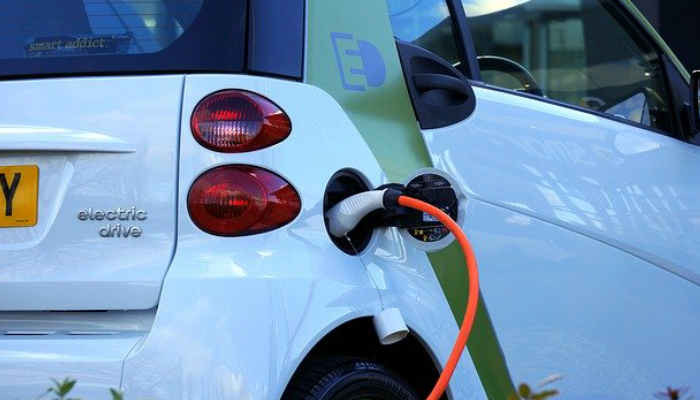Automotive
Autonomous Vehicles: Driving the Future of Transport

Autonomous vehicles, often called self-driving cars, are changing how we think about transportation. They use advanced technology to navigate without human input, promising to make our roads safer and more efficient. As we explore this exciting development, it’s important to understand the journey that brought us here, the challenges ahead, and the potential benefits of this transformative technology.
Key Takeaways
- Autonomous vehicles are set to revolutionise transport, similar to how cars changed society.
- They rely on advanced technology like sensors and AI to drive without human help.
- Safety is a major focus, with efforts to reduce accidents caused by human error.
- Regulations are being developed to ensure these vehicles are safe and effective on our roads.
- The environmental impact is significant, with potential reductions in carbon emissions and improved urban mobility.
The Evolution of Autonomous Vehicles
Early Experiments and Milestones
The journey of autonomous vehicles began many decades ago. In the 1920s, early experiments laid the groundwork for what we see today. Significant milestones include:
- The introduction of adaptive cruise control in the 1990s.
- The development of advanced driver assistance systems (ADAS).
- The rise of AI and machine learning in recent years, which has greatly enhanced the capabilities of these vehicles.
The Role of AI and Machine Learning
Artificial Intelligence (AI) and machine learning have played a crucial role in the recent evolutions of autonomous driving. These technologies allow vehicles to:
- Learn from vast amounts of data.
- Make real-time decisions based on their surroundings.
- Improve their performance over time through experience.
Major Players in the Industry
Several key companies are leading the charge in the development of autonomous vehicles. These include:
- Tech giants like Google and Tesla, who are investing heavily in research and development.
- Traditional automotive manufacturers, such as Ford and General Motors, who are adapting to new technologies.
- Startups focusing on niche areas of autonomous driving, contributing innovative solutions.
The evolution of autonomous vehicles is not just about technology; it’s about reshaping our future transport systems.
This ongoing journey is paving the way for a new era in transportation, where vehicles can operate independently, enhancing safety and efficiency on our roads.
Technological Advancements Driving Autonomous Vehicles
Sensor and Radar Technologies
The backbone of autonomous vehicles lies in their sensor and radar technologies. These systems allow vehicles to perceive their surroundings accurately. Key components include:
- LiDAR: Utilises light to measure distances and create 3D maps of the environment.
- Cameras: Provide visual data for object recognition and lane detection.
- Radar: Helps in detecting the speed and distance of nearby objects, especially in adverse weather conditions.
AI-Driven Decision Making
Artificial Intelligence (AI) plays a crucial role in how autonomous vehicles make decisions. It enables:
- Real-time analysis of data from sensors.
- Predictive modelling to anticipate the actions of other road users.
- Adaptive learning, allowing vehicles to improve their performance over time.
This integration of AI is essential for safe and efficient driving.
Real-Time Data Processing
The ability to process data in real-time is vital for the functionality of autonomous vehicles. This involves:
- High-performance computing to handle vast amounts of data quickly.
- Vehicle-to-vehicle communication to share information about traffic conditions and hazards.
- Cloud computing to enhance data storage and processing capabilities.
The future of transport hinges on these technological advancements, paving the way for safer and more efficient travel.
| Technology Type | Description | Benefits |
|---|---|---|
| LiDAR | Light detection and ranging for 3D mapping | Accurate distance measurement |
| Cameras | Visual data capture for navigation | Object recognition |
| Radar | Speed and distance detection | Works in poor visibility |
Safety and Ethical Considerations
Passenger and Pedestrian Safety
Ensuring the safety of all road users is paramount as autonomous vehicles become more common. These vehicles must be designed to avoid accidents and protect both passengers and pedestrians. Key safety measures include:
- Advanced sensors to detect obstacles and pedestrians.
- Emergency braking systems that activate automatically.
- Regular software updates to improve safety features.
Legal and Liability Issues
As autonomous vehicles operate, questions about who is responsible in case of an accident arise. This includes:
- Determining if the driver, manufacturer, or software developer is liable.
- Establishing clear regulations for insurance coverage.
- Developing a framework for no-fault insurance to simplify claims.
Ethical Dilemmas in Autonomous Driving
Autonomous vehicles face complex ethical decisions. For instance, if a vehicle must choose between hitting one person or a group, how should it decide? This raises important questions about:
- Programming ethical guidelines into vehicles.
- The potential for bias in decision-making algorithms.
- The need for public input on ethical standards.
As we advance towards a future with autonomous vehicles, it is crucial to address these safety and ethical concerns to build public trust and ensure a secure environment for all road users.
Regulatory Landscape for Autonomous Vehicles

Global Regulatory Efforts
The regulatory landscape for autonomous vehicles is complex and varies significantly across different countries. Many nations are working to create guidelines that support innovation while ensuring public safety. Here are some key points:
- Countries like Dubai are leading the way by integrating self-driving transport into public systems.
- In the United States, each state has its own set of rules, leading to a patchwork of regulations.
- European countries are also developing their own regulations, often focusing on safety and technology standards.
Balancing Innovation and Safety
Finding the right balance between encouraging new technology and ensuring safety is crucial. Some important aspects include:
- Testing Requirements: Vehicles must undergo extensive testing before being allowed on public roads.
- Safety Standards: Regulations need to ensure that autonomous vehicles meet high safety standards to protect passengers and pedestrians.
- Public Trust: Building trust in autonomous technology is essential for widespread adoption.
Collaborative Policymaking
Collaboration among various stakeholders is vital for effective regulation. This includes:
- Governments: They need to create clear and consistent rules.
- Industry Leaders: Companies must work together to share best practises and develop standards.
- Public Input: Engaging the public in discussions about regulations can help address concerns and build support.
The future of autonomous vehicles depends on a well-structured regulatory framework that prioritises safety while fostering innovation. Public safety must always come first, but we cannot ignore the potential benefits of this technology.
Environmental Impact of Autonomous Vehicles

Reduction in Carbon Emissions
Autonomous vehicles (AVs) have the potential to significantly reduce carbon emissions. By optimising driving patterns and reducing unnecessary idling, these vehicles can help lower the overall carbon footprint of transportation. Here are some key points:
- Fuel Efficiency: AVs can improve fuel economy by 4-10% through smoother acceleration and braking.
- Electric Integration: Many AVs are electric or hybrid, further decreasing emissions compared to traditional vehicles.
- Traffic Flow: By reducing congestion, AVs can lead to less fuel consumption and lower emissions.
Integration with Electric Vehicles
The rise of autonomous technology is closely linked with the growth of electric vehicles (EVs). This integration can lead to a more sustainable transport system. Key benefits include:
- Lower Operating Costs: EVs generally have lower maintenance and fuel costs.
- Renewable Energy Use: AVs can be charged using renewable energy sources, enhancing their environmental benefits.
- Reduced Noise Pollution: Electric AVs are quieter, contributing to less noise in urban areas.
Sustainable Transportation Practises
To maximise the environmental benefits of AVs, sustainable practises must be adopted. This includes:
- Shared Mobility: Promoting ride-sharing and carpooling to reduce the number of vehicles on the road.
- Smart Infrastructure: Developing roads and traffic systems that support AV technology.
- Public Awareness: Educating the public on the benefits of AVs and sustainable transport options.
The shift towards autonomous vehicles represents a crucial step in creating a more environmentally friendly transportation system. By embracing this technology, we can work towards a cleaner, more efficient future.
Autonomous Vehicles in Public Transport
Efficiency and Accessibility
Autonomous vehicles (AVs) are set to revolutionise public transport by making it more efficient and accessible for everyone. Here are some key benefits:
- Cost-Effective: Robo-taxis can be only 20% more expensive per mile than traditional cars, while robo-shuttles can be 10-40% cheaper.
- Increased Accessibility: AVs can provide transport options for those unable to drive, such as the elderly or disabled.
- Reduced Waiting Times: With on-demand services, passengers can enjoy shorter wait times compared to traditional public transport.
Reducing Urban Congestion
The introduction of autonomous vehicles can significantly help in reducing urban congestion. Here’s how:
- Optimised Routes: AVs can communicate with each other to find the best routes, reducing traffic jams.
- Shared Mobility: By promoting shared rides, fewer cars are needed on the road.
- Efficient Parking: AVs can drop off passengers and park themselves in less congested areas, freeing up space in busy zones.
Case Studies from Around the World
Several cities are already testing autonomous vehicles in their public transport systems:
- Dubai: Integrating self-driving taxis and buses to set a global example.
- San Francisco: Testing robo-taxis that operate in real traffic conditions.
- Singapore: Implementing autonomous shuttles in designated areas to enhance mobility.
The future of public transport lies in the integration of autonomous vehicles, which promise to make travel safer, faster, and more efficient.
In conclusion, the shift towards autonomous vehicles in public transport is not just a trend; it’s a necessary evolution to meet the demands of modern urban living. The automatic emergency braking market is projected to reach significant growth, reflecting the increasing focus on safety and efficiency in transport solutions.
Challenges in Autonomous Vehicle Adoption
Despite the exciting potential of autonomous vehicles, several key challenges hinder their widespread adoption. These challenges can be grouped into three main areas:
Technological Barriers
- Safety Concerns: Ensuring the safety of passengers and pedestrians is paramount. Autonomous vehicles must undergo extensive testing to prove they can operate without accidents.
- Infrastructure Requirements: Many regions lack the necessary infrastructure, such as well-marked roads and reliable GPS connectivity, which are essential for the effective functioning of self-driving cars.
- AI Limitations: The technology behind AI-driven decision-making must improve to handle complex traffic situations and make quick decisions in real-time.
Public Perception and Trust
- Fear of the Unknown: Many people are hesitant to trust autonomous vehicles due to safety fears and a lack of understanding of the technology.
- Job Loss Concerns: The potential for job losses in driving professions raises concerns among the public, leading to resistance against adoption.
- Ethical Dilemmas: Questions about how autonomous vehicles would make decisions in critical situations create ethical concerns that need addressing.
Regulatory Challenges
- Lack of Clear Regulations: Governments are still working on creating comprehensive guidelines for the use of autonomous vehicles, which can slow down progress.
- Balancing Innovation and Safety: Regulators must find a way to encourage innovation while ensuring public safety, which can be a difficult balance to strike.
- Global Disparities: Different countries have varying regulations, making it challenging for companies to operate internationally.
The journey towards fully autonomous vehicles is complex, requiring collaboration between technology developers, policymakers, and the public to overcome these challenges.
In summary, while the future of autonomous vehicles is promising, addressing these challenges is crucial for their successful integration into society. Investment in infrastructure and public education will be vital to foster acceptance and trust in this transformative technology.
Economic Implications of Autonomous Vehicles
Market Growth Projections
The market for autonomous vehicles is expected to grow significantly. In fact, the global market for L1 and L2 autonomous vehicles reached nearly USD 106 billion in 2021 and is projected to exceed USD 2.2 trillion by 2030. This growth is driven by several factors:
- Increasing demand for safe and efficient transport
- Rising disposable income in emerging economies
- Stringent safety regulations worldwide
Impact on Car Ownership
As autonomous vehicles become more common, traditional car ownership may decline. Many people might prefer using shared autonomous vehicles instead of owning a car. This shift could lead to:
- Reduced need for parking spaces
- Lower costs for individuals who rely on ride-sharing services
- A decrease in the number of cars on the road, leading to less congestion
Job Market Transformations
The rise of autonomous vehicles will also impact jobs. While some jobs may be lost, especially in driving professions, new opportunities will emerge in technology and vehicle maintenance. Key points include:
- Potential job losses for taxi and truck drivers
- New roles in tech development and vehicle management
- The need for retraining programmes for displaced workers
The transition to autonomous vehicles presents both challenges and opportunities for the economy. It is crucial to navigate these changes thoughtfully to ensure a smooth shift for all stakeholders involved.
| Year | Market Size (USD Trillions) |
|---|---|
| 2021 | 0.106 |
| 2030 | 2.2 |
The Future of Mobility with Autonomous Vehicles
Integration with Smart Cities
The rise of autonomous vehicles (AVs) is set to transform urban living. Smart cities will integrate AVs into their infrastructure, allowing for seamless communication between vehicles and city systems. This integration can lead to:
- Improved traffic flow
- Enhanced public transport efficiency
- Better energy management
Potential for Shared Mobility
Shared mobility services, such as robo-taxis and autonomous shuttles, are expected to become commonplace. These services can:
- Reduce the number of cars on the road
- Lower transportation costs for users
- Increase accessibility for those without personal vehicles
Long-Term Vision and Innovations
The future of mobility is not just about AVs; it’s about a holistic approach to transport. Innovations may include:
- Vehicle-to-vehicle communication for safer roads
- Advanced traffic management systems to reduce congestion
- Sustainable practises to minimise environmental impact
The journey towards a future with autonomous vehicles is as important as the destination itself. Collaboration among stakeholders will be key to overcoming challenges and realising the full potential of this technology.
In summary, the future of mobility with autonomous vehicles promises to be revolutionary, enhancing urban life and making transport more efficient and accessible. As we move forward, the integration of AVs into our daily lives will reshape how we think about travel and connectivity.
Autonomous Vehicles in Logistics and Delivery
Efficiency and Accessibility
Autonomous vehicles are set to transform the logistics and delivery sectors. These vehicles can significantly lower costs and improve efficiency in transporting goods. Here are some key benefits:
- Reduced freight costs: By automating delivery processes, companies can save on labour and operational expenses.
- Faster delivery times: With real-time data processing, deliveries can be optimised for speed.
- Increased accessibility: Autonomous delivery vehicles can reach areas that are hard to access, ensuring that more people receive their goods.
Reducing Urban Congestion
The rise of autonomous delivery vehicles can help tackle urban congestion. By using smart routing and vehicle-to-vehicle communication, these vehicles can:
- Minimise traffic jams by optimising delivery routes.
- Reduce the number of delivery vehicles on the road.
- Enhance overall traffic flow in busy urban areas.
Case Studies from Around the World
Several companies are already implementing autonomous vehicles in their logistics operations. Here are a few examples:
- Amazon: Testing drone deliveries to speed up the shipping process.
- Waymo: Partnering with delivery services to use self-driving vans.
- Nuro: Operating small autonomous vehicles for grocery deliveries.
The integration of autonomous vehicle technology could be a game changer for the shipping industry as it can help lower freight and logistics costs, improve fuel efficiency, and enhance service delivery.
In conclusion, the future of logistics and delivery is bright with the advent of autonomous vehicles. They promise to make the process more efficient, accessible, and environmentally friendly, paving the way for a new era in transportation.
The Intelligent Vehicle Grid
Vehicle-to-Vehicle Communication
The Intelligent Vehicle Grid is a revolutionary concept that connects autonomous vehicles to each other and to the surrounding infrastructure. This communication allows vehicles to share information about traffic conditions, hazards, and navigation routes. Key benefits include:
- Improved road safety through real-time alerts.
- Enhanced traffic flow by reducing congestion.
- Increased efficiency in route planning.
Traffic Management and Optimisation
With the integration of autonomous vehicles into the grid, traffic management becomes more effective. Vehicles can communicate with traffic lights and other infrastructure to optimise their routes. This leads to:
- Reduced waiting times at intersections.
- Better utilisation of road space.
- Lower fuel consumption and emissions.
Pollution Control and Environmental Benefits
The Intelligent Vehicle Grid also plays a crucial role in reducing pollution. By optimising traffic flow and reducing congestion, autonomous vehicles can help lower carbon emissions. Some expected outcomes include:
- A 90% reduction in wasted commuting time.
- Decreased fuel consumption in urban areas.
- Enhanced air quality through fewer emissions.
The Intelligent Vehicle Grid represents a significant step towards a more efficient and sustainable transportation system, paving the way for a future where autonomous vehicles can operate seamlessly and safely.
This interconnected system not only enhances the driving experience but also contributes to a greener planet, making it a vital component of modern transport solutions.
Conclusion
In summary, autonomous vehicles are set to change how we travel in ways we can hardly imagine today. They promise to make our roads safer, reduce traffic jams, and help the environment by cutting down on pollution. As we move forward, it’s important to keep safety and fairness in mind. This means making sure that everyone can benefit from these new technologies, especially those who may struggle with traditional transport, like the elderly or disabled. With the right steps, we can look forward to a future where self-driving cars are a normal part of our lives, making transport easier and more accessible for everyone.
Frequently Asked Questions
What are autonomous vehicles?
Autonomous vehicles, or self-driving cars, are cars that can drive themselves without human help. They use special technology to see their surroundings and make decisions.
How do autonomous vehicles work?
They work using sensors, cameras, and software that help them understand the environment and navigate safely.
Are autonomous vehicles safe?
While they aim to be safer than human drivers, they still need thorough testing to ensure they can handle all driving situations.
What are the benefits of autonomous vehicles?
They can reduce accidents, ease traffic, and make transportation more accessible for everyone, including those who cannot drive.
How will autonomous vehicles affect jobs?
Some jobs may change or disappear, especially in driving sectors, but new jobs may also be created in technology and maintenance.
What is the environmental impact of autonomous vehicles?
They can help reduce carbon emissions by optimising driving patterns and integrating with electric vehicles.
What are the main challenges for autonomous vehicles?
Challenges include safety concerns, the need for new regulations, and public trust in the technology.
When will we see autonomous vehicles widely used?
While they are being tested now, it may take several years before they are common on our roads.
-

 Press Release3 days ago
Press Release3 days agoClinical Trials Market Set for Robust Growth, Driven by Drug Development Surge and Digital Innovation
-

 Press Release6 days ago
Press Release6 days agoBellarium ($BEL) Price Prediction: Could It Hit $5 by 2026?
-

 Business5 days ago
Business5 days agoHow Managed IT Solutions Help Small Teams Compete at Enterprise Scale
-

 Press Release4 days ago
Press Release4 days agoIndustrial Boiler Market Expected to Surpass USD 24.4 Billion by 2035 Amid Growing Demand for Energy Efficiency and Industrialization
-

 Press Release4 days ago
Press Release4 days agoFill-Finish Pharmaceutical Contract Manufacturing Market Expected to Flourish Amid Biopharmaceutical Boom and Global Outsourcing Trend by 2035
-

 Press Release4 days ago
Press Release4 days agoPreventive Vaccines Market to Witness Strong Growth by 2035
-

 Press Release4 days ago
Press Release4 days agoGreen Bio Chemicals Market Poised for Sustainable Growth amidst Global Shift to Eco-Friendly Alternatives by 2035
-

 Press Release4 days ago
Press Release4 days agoPet Food Nutraceutical Market Set for Robust Expansion Amid Rising Demand for Pet Wellness by 2035

















